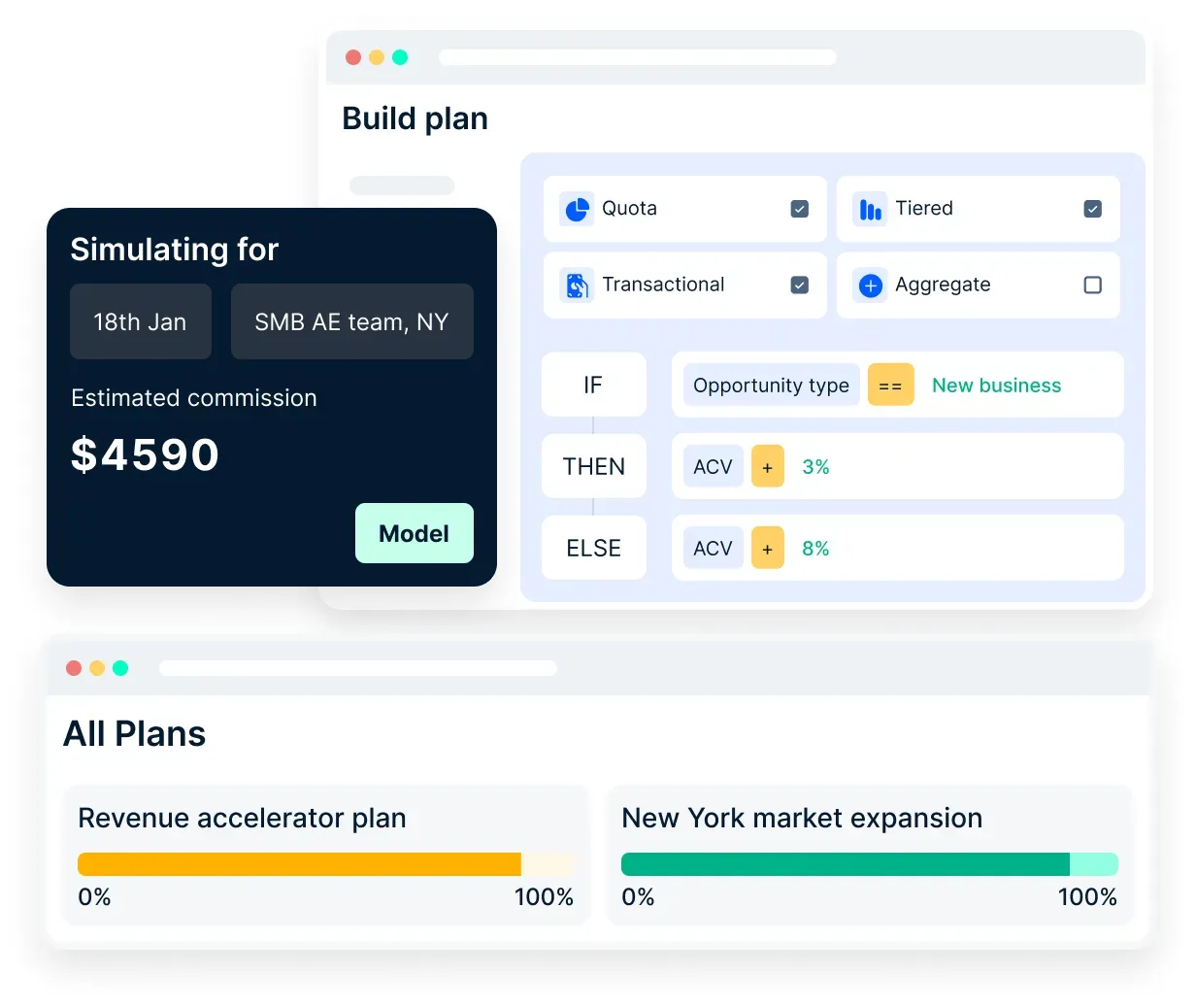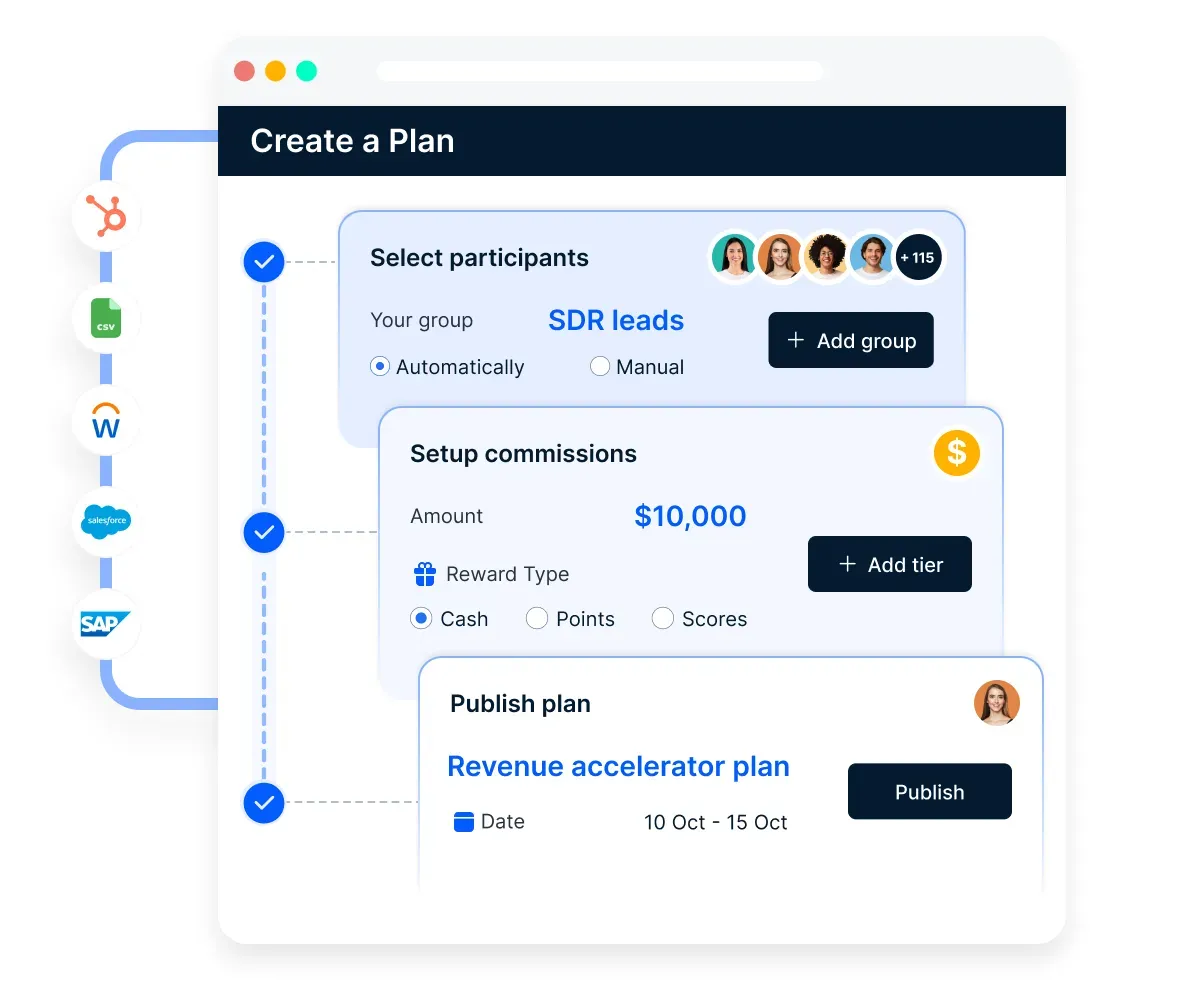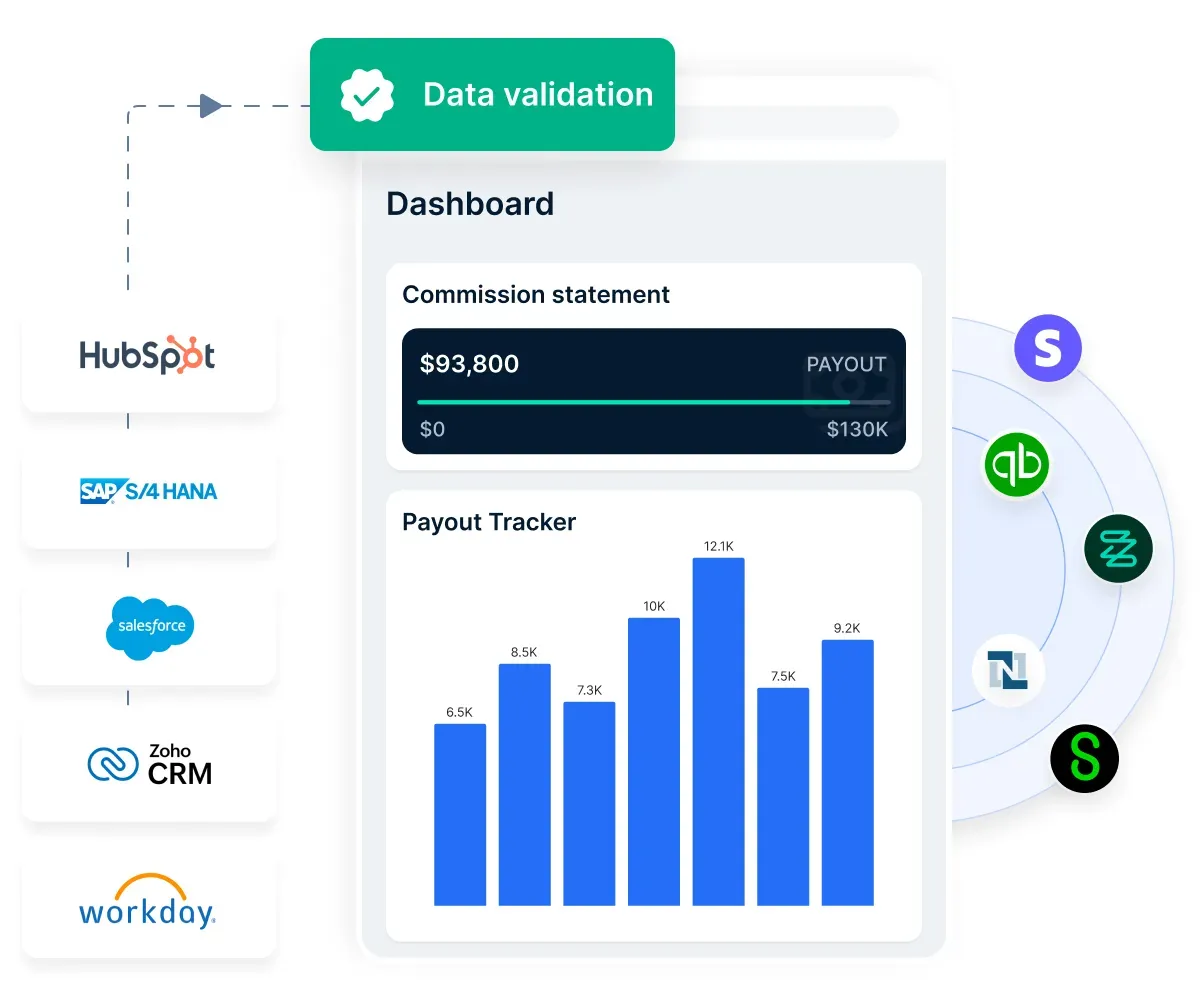12 Strategien zum Management des Verkaufszyklus, um den Verkaufsprozess zu optimieren
Strategien für das Management des Vertriebszyklus zur Optimierung Ihres Vertriebsprozesses, zur Steigerung der Effizienz und zur Förderung des Umsatzwachstums. Steigern Sie die Leistung Ihres Vertriebsteams und schließen Sie Geschäfte effektiver ab.
Auf dieser Seite
Eine erfolgreiche Vertriebsstrategie basiert nicht auf Vermutungen oder Zufallstaktiken. Sie erfordert vielmehr einen strukturierten Ansatz, der Ihr Team durch jeden Schritt der Customer Journey führt. Hier spielt das Vertriebszyklusmanagement eine entscheidende Rolle.
Das Vertriebszyklusmanagement verwaltet und optimiert effektiv die Phasen der Umwandlung von Interessenten in zahlende Kunden. Es besteht aus verschiedenen Strategien und Techniken, um den Vertrieb zu optimieren, starke Beziehungen aufzubauen und Geschäfte abzuschließen.
In diesem Artikel befassen wir uns mit 12 effektiven Strategien für das Vertriebszyklusmanagement, die Unternehmen helfen können, ihre Umsätze zu steigern und die Kundenzufriedenheit zu verbessern.
Was ist Verkaufszyklusmanagement?
Das Management des Verkaufszyklus spielt eine entscheidende Rolle bei der Überwachung der einzelnen Phasen des Verkaufsprozesses durch Vertriebsmitarbeiter, Manager und Führungskräfte. Durch die Analyse von Trends können sie beurteilen, welche Aspekte gut laufen, und Bereiche identifizieren, die verbessert werden müssen.
Für Vertriebsmitarbeiter und Vertriebsleiter bietet ein effektives Vertriebszyklusmanagement einen strukturierten Ansatz zur Bewertung jeder Phase des Vertriebszyklus. Dadurch wird sichergestellt, dass notwendige Anpassungen vorgenommen werden können, um die Effizienz zu steigern und bessere Ergebnisse zu erzielen. Der Einsatz von Tools wie CRM vereinfacht den Prozess und macht das Vertriebsprozessmanagement effizienter und datengesteuert.
Jeder Vertriebsmitarbeiter stützt sich bei seinen täglichen Aktivitäten auf einen genau definierten Vertriebszyklus. Die Kenntnis dieses Zyklus ermöglicht es den Teams, fokussiert und anpassungsfähig zu bleiben und die Herausforderungen des Verkaufs mit Zuversicht und Klarheit zu meistern.
12 Wirksame Strategien für das Vertriebszyklusmanagement
Hier finden Sie wirksame Strategien für das Management des Verkaufszyklus.
1. Definieren Sie die Zielgruppe und das ideale Kundenprofil
Bevor Sie mit Ihren Verkaufsbemühungen beginnen, ist es wichtig, Ihre Zielgruppe zu definieren und ein ideales Kundenprofil zu erstellen.
Wenn Sie die Probleme und Vorlieben Ihrer potenziellen Kunden kennen, können Sie Ihren Verkaufsansatz entsprechend anpassen. Dieser gezielte Ansatz stellt sicher, dass Sie Ihre Zeit und Ressourcen in potenzielle Kunden investieren, bei denen die Wahrscheinlichkeit am größten ist, dass sie zu treuen Kunden werden.
2. Qualifizierung von Leads
Eine effektive Lead-Qualifizierung ist für ein effizientes Vertriebszyklusmanagement unerlässlich. Entwickeln Sie einen systematischen Ansatz zur Qualifizierung von Leads auf der Grundlage bestimmter Kriterien wie Budget, Zuständigkeit, Bedarf und Zeitrahmen.
So können Sie Ihre Bemühungen auf die Leads mit dem höchsten Konversionspotenzial konzentrieren und Zeit und Ressourcen sparen, die sonst für unqualifizierte Interessenten verschwendet würden. Ein effizientes und erfahrenes Lead-Verifizierungsteam oder -verfahren ist hilfreich.
3. Aufbau von Beziehungen und Vertrauen
Der Aufbau starker Beziehungen und die Schaffung von Vertrauen bei potenziellen Kunden ist für ein erfolgreiches Verkaufszyklusmanagement von grundlegender Bedeutung.
Nehmen Sie sich die Zeit, die Bedürfnisse, Herausforderungen und Ziele Ihrer potenziellen Kunden zu verstehen - pflegen Sie Beziehungen, indem SieWert bietenbieten, relevante Einblicke gewähren und auf ihre Anliegen eingehen. Der Aufbau von Vertrauen erhöht die Wahrscheinlichkeit, dass Interessenten in Kunden umgewandelt werden, und fördert die langfristige Loyalität.
4. Wirksame Kommunikation und aktives Zuhören
Effektive Kommunikation ist das Rückgrat eines erfolgreichen Vertriebszyklusmanagements. Üben Sie das Zuhören, um die Bedürfnisse Ihrer potenziellen Kunden zu verstehen und Ihre Lösungen entsprechend anzupassen.
Kommunizieren Sie klar und prägnant Ihr Wertversprechen und stellen Sie sicher, dass Ihre Botschaft bei den Interessenten ankommt. Effektive Kommunikation fördert das Engagement, verbessert das Verständnis und baut eine Beziehung auf.
5. Entwicklung von überzeugenden Wertvorschlägen
Ein überzeugendes Wertversprechen ist entscheidend, um Ihr Produkt oder Ihre Dienstleistung von der Konkurrenz abzuheben. Kommunizieren Sie klar und deutlich die einzigartigen Vorteile und den Wert, den Ihr Angebot den potenziellen Kunden bietet. Verstehen Sie deren Probleme und positionieren Sie Ihre Lösung als die ideale Antwort auf ihre Herausforderungen. Ein überzeugendes Wertversprechen erregt Aufmerksamkeit, weckt Interesse und veranlasst potenzielle Kunden dazu, im Verkaufszyklus voranzuschreiten.
6. Wirksame Verkaufspräsentationen und Demonstrationen
Entwerfen Sie überzeugende Verkaufspräsentationen und Demonstrationen, die den Wert Ihres Angebots herausstellen. Nutzen Sie Bilder, Geschichten und Beispiele aus der Praxis, um Ihre Kunden zu begeistern und die Vorteile hervorzuheben, die sie erwarten können.
Passen Sie Ihre Präsentationen an die spezifischen Bedürfnisse und Anliegen jedes einzelnen Interessenten an und schaffen Sie so ein persönliches Erlebnis, das ihn anspricht.
7. Umgang mit Einwänden und Überwindung von Widerständen
Während des Verkaufszyklus kann es vorkommen, dass potenzielle Kunden Einwände erheben oder Widerstand äußern. Zu einem effektiven Verkaufszyklusmanagement gehört es, diese Einwände zu antizipieren und proaktiv darauf einzugehen.
Verstehen Sie die Gründe für Beschwerden und reagieren Sie mit Einfühlungsvermögen und Vertrauen. Überwinden Sie Einwände, indem Sie zusätzliche Informationen bereitstellen, Erfahrungsberichte anbieten oder eine Probezeit einräumen. Durch den effektiven Umgang mit Beschwerden bauen Sie Vertrauen auf und kommen dem Geschäftsabschluss näher.
8. Verhandlungs- und Abschlusstechniken
Die Beherrschung von Verhandlungs- und Abschlusstechniken ist entscheidend für ein erfolgreiches Verkaufszyklusmanagement. Verstehen Sie die Prioritäten des potenziellen Kunden, erkunden Sie für beide Seiten vorteilhafte Optionen, und verhandeln Sie Bedingungen, die beide Parteien zufriedenstellen.
Nutzen Sie Abschlusstechniken wie das Erzeugen eines Gefühls der Dringlichkeit, das Anbieten von Anreizen oder das Bereitstellen von Zusatznutzen. Sie können Geschäfte abschließen und Ihren Umsatz maximieren, indem Sie die Verhandlungs- und Abschlussphase meistern.
Ein effektiver Geschäftsabschluss erfordert eine starke Motivation und die richtigen Anreize. Compass ermöglicht es Unternehmen, skalierbare Verkaufsprovisionspläne mit Beschleunigern, Boni und Multiplikatoren zu entwerfen, die das Verhalten der Verkäufer in Richtung der Umsatzziele lenken.

Durch die Gewährleistung einer 100-prozentigen Auszahlungsgenauigkeit und transparenter Erträge hilft Compass den Vertriebsteams, sich auf ihre Abschlussstrategien zu konzentrieren und zuversichtlich zu bleiben.
9. Follow-up und Pflege
Follow-up und Pflege sind entscheidend für die Pflege von Beziehungen und die Umwandlung von Leads in Kunden. Implementieren Sie einen strukturierten Follow-up-Prozess, um mit potenziellen Kunden in Kontakt zu bleiben. Stellen Sie zusätzliche Informationen zur Verfügung, gehen Sie auf noch bestehende Bedenken ein und bieten Sie kontinuierliche Unterstützung an.
Pflegen Sie Leads, indem Sie wertvolle Inhalte und personalisierte Empfehlungen weitergeben und immer auf dem Laufenden bleiben. Konsequentes Follow-up stärkt die Beziehungen und erhöht die Wahrscheinlichkeit einer Konversion.
Ein gut strukturierter Follow-up-Prozess sorgt für eine konsequente Auseinandersetzung mit den Leads, aber genauso wichtig ist es, die Vertriebsteams zu motivieren, effektiv nachzufassen.

Compass vereinfacht die Verwaltung von Vergütungsanreizen, indem es Echtzeittransparenz über die Einnahmen bietet, die Leistungsverfolgung spielerisch gestaltet und die pünktliche Auszahlung sicherstellt. Vertriebsmitarbeiter bleiben engagiert, und Unternehmen fördern mit datengesteuerten Anreizen eine Hochleistungskultur.
10. Vertriebsanalyse und datengestützte Entscheidungsfindung
Nutzen SieVertriebsanalyseund datengesteuerte Entscheidungsfindung, um Einblicke in die Effektivität Ihrer Strategien für das Vertriebszyklusmanagement zu gewinnen. Verfolgen Sie wichtigeMetrikenanalysieren Sie die Konversionsraten und identifizieren Sie verbesserungswürdige Bereiche. Nutzen Sie Daten, um Ihren Ansatz zu verfeinern, Ihren Vertriebsprozess zu optimieren und fundierte Entscheidungen zu treffen, die zu Ergebnissen führen.
Die Nutzung von Vertriebsanalysen ist entscheidend für die Optimierung des Vertriebszyklusmanagements. Mit Tools wie Compass können Unternehmen Daten aus mehreren Integrationen zentralisieren, Provisionen validieren und Auszahlungstrends analysieren.

Compass bietet Echtzeit-Einblicke in die Vertriebsleistung, die Quotenerfüllung und den ROI von Provisionen, so dass Vertriebsteams fundierte, datengestützte Entscheidungen treffen und ihre Anreizstrategien verbessern können.
11. Kontinuierliches Lernen und Verbesserung
Das Management des Verkaufszyklus ist ein ständiger Lernprozess. Fördern Sie das kontinuierliche Lernen und die Verbesserung innerhalb Ihres Verkaufsteams. Bieten Sie Schulungs- und Entwicklungsmöglichkeiten an, um ihre Fähigkeiten zu verbessern und auf den neuesten Stand der Branchentrends zu bringen.
Fördern Sie eine Kultur des Experimentierens, in der neue Strategien und Techniken gefördert und bewertet werden. Durch ständiges Lernen und Verbessern können Sie der Konkurrenz einen Schritt voraus sein und sich an die sich entwickelnde Marktdynamik anpassen.
12. Zusammenarbeit und Abstimmung mit anderen Teams
Das Management des Verkaufszyklus liegt nicht allein in der Verantwortung des Vertriebsteams. Arbeiten Sie mit anderen Teams wie Marketing und Kundenservice zusammen und stimmen Sie sich mit ihnen ab, um ein nahtloses Kundenerlebnis zu gewährleisten.
Tauschen Sie Erkenntnisse aus, stimmen Sie Strategien ab und koordinieren Sie Ihre Bemühungen, um eine einheitliche Botschaft und eine reibungslose Übergabe zwischen den Teams zu gewährleisten. Die Zusammenarbeit verbessert die Effizienz, steigert die Kundenzufriedenheit und fördert den allgemeinen Geschäftserfolg.
Ein effektives Vertriebszyklusmanagement ist eine Teamleistung, die eine Abstimmung zwischen Vertrieb, Finanzen und Betrieb erfordert. Compass fungiert als Single Source of Truth und lässt sich in CRM-, ERP- und Gehaltsabrechnungssysteme integrieren, um die Provisionsverfolgung zu automatisieren und die funktionsübergreifende Zusammenarbeit zu optimieren.

Mit Compass können Unternehmen die Einhaltung von Vorschriften sicherstellen, manuelle Fehler vermeiden und Anreizstrukturen schaffen, die alle Teams auf gemeinsame Umsatzziele ausrichten.
Schlussfolgerung
Ein effektives Vertriebszyklusmanagement ist für Unternehmen, die ihr Umsatzwachstum steigern und starke Kundenbeziehungen aufbauen wollen, von entscheidender Bedeutung. Wenn Sie diese 12 Strategien umsetzen, können Sie die folgenden Vorteile erwarten:
- Optimieren Sie Ihren Verkaufsprozess
- Effektive Pflege von Leads
- Schließen Sie Geschäfte erfolgreich ab.
Denken Sie daran, diese Strategien an Ihre spezifischen Geschäftsbedürfnisse anzupassen, Ihren Ansatz kontinuierlich zu bewerten und zu verfeinern und die Bedürfnisse und Präferenzen Ihrer Interessenten und Kunden in den Vordergrund zu stellen. Mit einem effektiven Verkaufszyklusmanagement können Sie ein nachhaltiges Geschäftswachstum erzielen und Ihre Verkaufsziele übertreffen.
FAQ's
Was sind die 3 K's im Verkauf?
Die 3 K's im Verkauf sind:
- Kontaktaufnahme - Aufbau einer Beziehung mit dem potenziellen Kunden
- Überzeugen - Aufzeigen des Nutzens und Ansprechen von Schmerzpunkten
- Abschluss - Sicherung des Geschäftsabschlusses und Sicherstellung der Kundenbindung
Was sind die 4 Phasen des Verkaufszyklus?
Die 4 Phasen des Verkaufszyklus sind:
- Lead Generation - Identifizierung und Gewinnung potenzieller Käufer
- Lead-Qualifizierung - Bewertung des Interesses und der Bereitschaft zum Kauf
- Den Verkauf abschließen - Einwände ansprechen und einen Vertrag abschließen
- Post-Sale Follow-up - Sicherstellung der Kundenzufriedenheit und Aufbau von Kundentreue
Was sind die 7 Phasen des Verkaufszyklus?
Die 7 Phasen des Verkaufszyklus sind:
- Prospecting - Identifizierung potenzieller Kunden
- Qualifizierung - Beurteilung, ob der Lead gut geeignet ist
- Annäherung - Herstellung des Erstkontakts und Aufbau einer Beziehung
- Präsentation - Aufzeigen des Werts des Produkts/der Dienstleistung
- Umgang mit Einwänden - Bedenken und Zögern ausräumen
- Abschluss - Abschluss des Verkaufs und Sicherung der Verpflichtung
- Follow-up - Pflege von Kundenbeziehungen zur Bindung und Weiterempfehlung von Kunden
Was ist der Zyklus des Vertriebsmanagements?
Der Vertriebsmanagementzyklus bezieht sich auf den strukturierten Prozess, den Unternehmen befolgen, um Leads zu generieren, Interessenten in Kunden umzuwandeln und langfristige Beziehungen zu pflegen. Er umfasst die Planung, Ausführung, Verfolgung und Optimierung von Vertriebsaktivitäten, um das Umsatzwachstum zu fördern.













